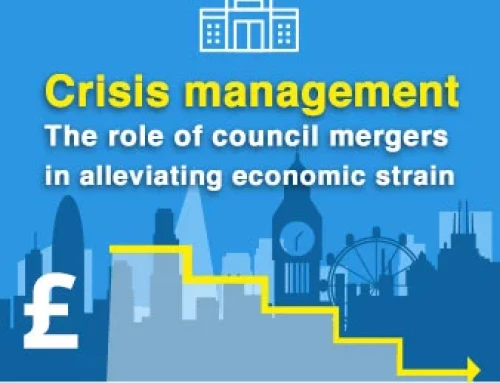Mobilising the Workforce in 2019!
What are the technology trends for the workforce?
Hello 2019, Hello Mobility! We are in the first week of the New Year and it’s time to talk business. This year seems to be quite amazing already on the technological front. We expect to see significant growth in AI, AR, IoT, and 4th Industrial Revolution, Robotics, Mobile technology and Big Data.
66% of CEOs expect their company to change its business model in the next 3 years, reports Gartner. And, 49% of CIOs have already begun to bring a change to their business models. The main focus is to go digital for optimised workflows and improved collaboration.
Why is it necessary to mobilise the workforce?
The global mobile workforce population will reach 1.87 billion in 2022, accounting for 42.5% of the global workforce as compared to 1.45 billion in 2016.
Mobility solutions UK continue to be on the agenda of the enterprises that are still hesitant to adopt it. As a matter of fact, with every passing year, the number of employees looking for flexible work environments is increasing. It is evident that to retain the best talent and gain maximum from them, a company must offer them suitable culture and tech-facilities. Digital opportunities have given a tremendous boost to workforce mobility.
For the organisations yet to experience the benefits of mobility solutions, this is the right time to begin. Though enterprises are aware of the digital transformation, many of them are yet stuck to their conventional methods leading to delayed processes, customer dissatisfaction, increased costs and reduced productivity. On the other hand, those who have taken steps towards mobilising their workforce are seeing their expectations being fulfilled.
According to Gartner, 67% of business leaders believe that it is hard to beat the competitors if their company fails to go more digital by 2020.
To survive in the competition, it is necessary for the SMEs to mobilise their workforce and empower them to deliver better outcomes. It is no more an additional point, but a must-have factor to achieve business goals.
How to plan the workforce mobilisation journey?
As per the reports, UK’s 80+ notable enterprises from various sectors visited EE’s 5G mobile network trial site at Canary Wharf to participate in the demonstration sessions and share their thoughts on how 5G will play into their digital strategies. This year will witness the launch of 5G with multiple smartphones and a 5G home router in 16 cities.
It’s agreeable that planning a channel shift is a hard nut to crack. But, considering the developments in the technology it is inevitable too. To begin with, the cloud is the enabler of mobility. Cloud-based infrastructure and high-speed networks are at the base. SME’s must take the support of cloud. Reflect upon following things before embarking on the mobilisation journey-
-
Understand the nature of your business
Every enterprise has its own needs. Whether small or big, it is necessary to ascertain your needs first. For example, prioritize if it’s your HR, customer service, field sales or maintenance department to begin with. Know how instant and accurate service your customers expect. Analyse the security parameters. Just following the trend will not fetch the desired outcome. Start from the core and continue ahead to bring them all on the platform. Be clear with what you want to achieve with mobility solutions.
-
Replicate repetitive and non-productive tasks
The main aim of adapting to mobile is eliminating cumbersome tasks that consume time and reduce efficiency. Identify which tasks can free your workforce from these repetitive tasks. Then, work with your solution provider to automate them and put them on mobile in a way that it offers collaboration and helps to achieve productivity. A simple example would be assigning the task to a worker. Rather than using paper sheets to keep the update, the back-office team could share the task and customer information with the field worker using the application and also receive the task completion updates on-the-go.
-
Consider the needs of your workforce
It’s essential to know if you are planning to mobilise your workforce only to carry out field operations or allowing even your regular workers to access information and work remotely. It makes a huge difference because the field technicians might need simpler design and technology to do their work. But, if it’s higher level employees, then they may need more features and security. The goal is to make their job simpler. Involve your workforce right from the beginning to design a solution best suited to them as they are the ones who will be using it. And once it is done, make sure they are trained appropriately to use the platform.
-
Analyse the cost and revenue
72% of strategists say that revenue expectations are missing from their company’s digital efforts. Almost every SME organisation faces budget problems. It’s not easy for them to invest. So, the wise way is balancing the costs. One of the important advantages of mobilising your workforce is saving on extra costs and cutting down the expenses like fuel, extra labour, repetitive visits, paper, etc. and the other part is simultaneously increasing the revenues. Look from your customers’ perspective to enhance their experience and ensure a service that makes them stick to your business. It may also mean investing a small amount and trying the solution with a selected set of workers and then moving ahead if the results are in your favour.
-
Choose the appropriate solution
Last but not the least, a crucial factor is choosing your service provider or partner. There are hundreds to thousands of technology vendors in the market. You may get tempted to try them, especially if they are already serving any of your competitors or similar businesses. But, hold on! As mentioned earlier, every organisation is unique. Go for a tailored solution matching your mobility needs. Choosing the right hardware or handheld device or promoting the BYOD (Bring Your Own Device) policy also matters. BYOD may sound easy but pose a security threat. Therefore, ponder over and make the right choice.
What are the possible benefits of workforce mobilisation?
Taking a digital approach for workforce mobilisation endows the organisation with an array of benefits. Such dedicated mobile applications contribute to workforce optimisation. SME’s can position their workforce in the best possible way and free them from the burden of unproductive work and unnecessary rounds to the office. An enterprise can unlock new opportunities to increase their revenues. In a nutshell, here is the list of possible advantages-
- Real-time Updates and Monitoring
- Enhanced Customer Satisfaction
- Empowered Workforce
- Increased Collaboration
- Work Flexibility
- Retaining Talent
- Controlled Labour and Fuel Costs
- Worker Safety
- Upselling and Cross-selling Opportunities
- Simplified Business Operations
- Balanced Work Schedules
- Competitive Edge
- Improved Service Delivery
- High Availability
- Employee Engagement
Modern applications developed to accommodate field operations are a boon to the enterprises if they choose an appropriate solution. An all-inclusive solution will allow reaping all the benefits of mobility.
Mobility has no Alternative!
According to the ONS statistics, flexi-time has increased by 12.35% in the period of 2012 – 2016. It was also found that around 4.2 million employees in the last decade preferred to work from home on a regular basis and it’s further expected that half of the UK’s workforce will be working remotely by 2020.
Sooner or later, every business organisation will need to accept this fact and allow their workforce to unlock innovation and become efficient. Not only for the employees but it will also bring fruitful results to the business. That’s why; they will need to overcome the fear and challenges stopping the workforce mobilisation. Furthermore, evolve with time and technology. The companies should start planning their objectives, work with their employees to create a new business model, partner with a solution provider that understands their requirements and offers trial with a proven record, and turn the impossible into possible. To know more about bespoke mobility solutions UK, connect with our experts.
Accelerate the mobility trend!





